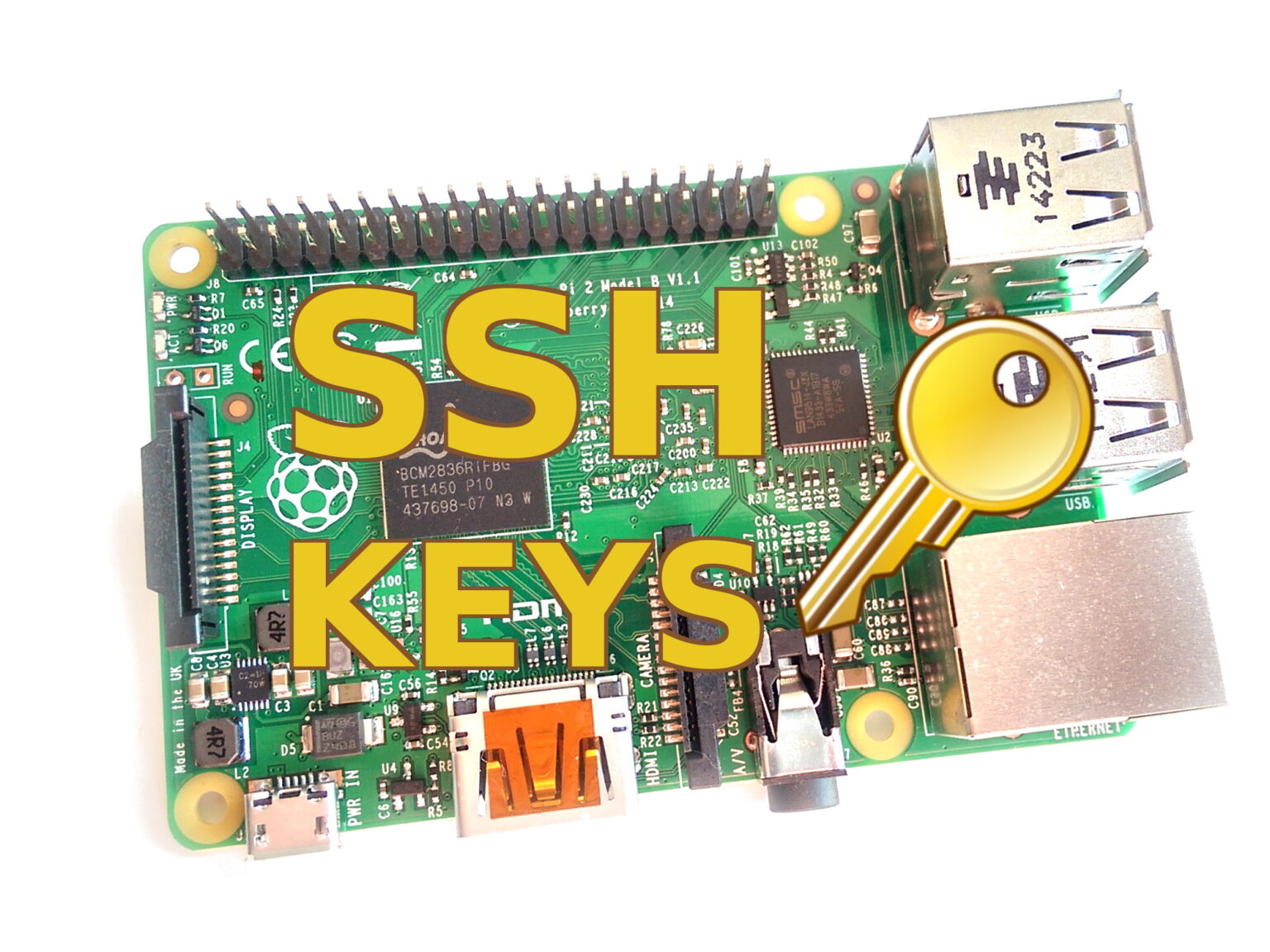RemoteIoT & Raspberry Pi SSH Keys: Secure & Free Setup Guide
Are you grappling with the complexities of securing your Raspberry Pi for remote access? The cornerstone of robust Raspberry Pi security lies in meticulous SSH key management, a critical skill for anyone venturing into the world of remote IoT deployments.
Remote access to a Raspberry Pi opens up a world of possibilities, from home automation to sophisticated industrial control systems. However, this convenience comes with inherent security risks. Relying solely on passwords for authentication leaves your device vulnerable to brute-force attacks and unauthorized access. This is where SSH keys come into play, offering a far more secure alternative.
Understanding SSH Key Management
SSH keys operate on the principle of public-key cryptography. This involves generating a pair of keys: a private key, which you keep secret and secure on your local machine, and a public key, which you place on the Raspberry Pi you wish to access. When you attempt to connect, the Raspberry Pi uses the public key to verify that you possess the corresponding private key. This eliminates the need to transmit passwords over the network, making it significantly more resistant to eavesdropping and credential theft.
Why SSH Keys Are Essential for Raspberry Pi Security
Traditional password-based authentication is susceptible to various attacks, including:
- Brute-force attacks: Attackers can repeatedly try different password combinations until they guess the correct one.
- Dictionary attacks: Attackers use lists of common passwords to try and gain access.
- Man-in-the-middle attacks: Attackers intercept communication between your device and the Raspberry Pi, potentially capturing your password.
SSH keys mitigate these risks by:
- Eliminating password transmission: With SSH keys, passwords are never sent over the network, making them immune to interception.
- Requiring possession of the private key: Access is granted only to those who possess the correct private key, making it significantly harder for attackers to gain unauthorized access.
- Supporting stronger encryption: SSH keys typically use stronger encryption algorithms than those used to store passwords, further enhancing security.
The Role of Remoteiot Platform
Remoteiot platform aims to simplify the complexities of remote device management, including SSH key management, for Raspberry Pi devices. A well-designed platform offers features that streamline the process of generating, deploying, and managing SSH keys, making it easier for users to secure their devices.
Setting Up SSH Keys on Your Raspberry Pi: A Step-by-Step Guide
While Remoteiot platform is mentioned, let's outline the general process of setting up SSH keys on a Raspberry Pi. This process involves generating a key pair on your local machine, transferring the public key to the Raspberry Pi, and configuring the SSH server to use key-based authentication.
Step 1: Generate an SSH Key Pair
On your local machine (e.g., your laptop), open a terminal or command prompt and run the following command:
ssh-keygen -t rsa -b 4096This command generates an RSA key pair with a key size of 4096 bits, which is considered a strong level of encryption. You'll be prompted to enter a file in which to save the key (the default is usually fine) and a passphrase. A passphrase adds an extra layer of security to your private key, requiring you to enter it each time you use the key.
Step 2: Transfer the Public Key to Your Raspberry Pi
There are several ways to transfer the public key to your Raspberry Pi. One common method is to use the `ssh-copy-id` command:
ssh-copy-id user@raspberrypi.localReplace `user` with your Raspberry Pi username and `raspberrypi.local` with the hostname or IP address of your Raspberry Pi. You'll be prompted for your Raspberry Pi password. The `ssh-copy-id` command automatically copies the public key to the `~/.ssh/authorized_keys` file on your Raspberry Pi.
If `ssh-copy-id` is not available, you can manually copy the public key. First, display the contents of your public key file:
cat ~/.ssh/id_rsa.pubCopy the entire output. Then, log in to your Raspberry Pi using SSH with your password:
ssh user@raspberrypi.localCreate the `.ssh` directory if it doesn't exist:
mkdir -p ~/.sshCreate or edit the `authorized_keys` file:
nano ~/.ssh/authorized_keysPaste the public key you copied earlier into this file. Save the file and exit the editor.
Step 3: Disable Password Authentication
To further enhance security, disable password authentication in the SSH server configuration. Edit the SSH server configuration file:
sudo nano /etc/ssh/sshd_configFind the line `PasswordAuthentication yes` and change it to `PasswordAuthentication no`. Also, ensure that the line `PubkeyAuthentication yes` is uncommented (if it is commented out, remove the `#` at the beginning of the line).
Save the file and exit the editor. Then, restart the SSH service:
sudo systemctl restart ssh
Important Security Considerations
- Protect your private key: Your private key is the most important part of the SSH key system. Keep it secret and secure. Do not share it with anyone or store it in a public location.
- Use a strong passphrase: Protect your private key with a strong passphrase. This adds an extra layer of security in case your private key is compromised.
- Regularly rotate your keys: Periodically generate new SSH key pairs and revoke the old ones. This reduces the risk of a compromised key being used for unauthorized access.
- Monitor SSH logs: Regularly review the SSH logs on your Raspberry Pi for any suspicious activity.
- Keep your system up to date: Regularly update your Raspberry Pi's operating system and software packages to patch any security vulnerabilities.
Integrating Remoteiot with Raspberry Pi
The promise of platforms like Remoteiot is to abstract away much of the complexity described above. They aim to provide a user-friendly interface for generating, deploying, and managing SSH keys across multiple Raspberry Pi devices. This can be particularly valuable for users managing a large fleet of devices or those who are not comfortable with command-line interfaces.
While specific instructions for Remoteiot platform weren't found in the provided content, the typical process would involve:
- Downloading and installing the Remoteiot platform software on your Raspberry Pi.
- Creating an account on the Remoteiot platform website.
- Linking your Raspberry Pi to your Remoteiot account.
- Using the Remoteiot platform's interface to generate and deploy SSH keys to your Raspberry Pi.
The platform should handle the secure transfer of the public key to the Raspberry Pi and configure the SSH server accordingly. It may also provide features for managing user roles and permissions, allowing you to restrict access to specific users or groups.
Beyond Basic SSH Key Setup: Advanced Security Practices
Once you have SSH keys set up, consider implementing these advanced security practices to further harden your Raspberry Pi:
- Port Knocking: Configure your Raspberry Pi to only open the SSH port (port 22 by default) after a specific sequence of connection attempts to other ports. This makes it more difficult for attackers to discover the SSH port.
- Fail2ban: Install Fail2ban, a service that automatically blocks IP addresses that make too many failed login attempts. This helps to prevent brute-force attacks.
- Two-Factor Authentication (2FA): While SSH keys provide strong authentication, consider adding an extra layer of security with two-factor authentication. This requires users to enter a code from their smartphone or another device in addition to their SSH key.
- Change the Default SSH Port: Changing the default SSH port (22) to a non-standard port can deter automated attacks that scan for open SSH ports.
- Use a Firewall: Configure a firewall, such as `iptables` or `ufw`, to restrict access to your Raspberry Pi to only the necessary ports and IP addresses.
The Importance of Regular Security Audits
Security is an ongoing process, not a one-time fix. Regularly audit your Raspberry Pi's security configuration to identify and address any potential vulnerabilities. This includes:
- Reviewing SSH logs: Look for any suspicious activity, such as failed login attempts or connections from unknown IP addresses.
- Checking for outdated software: Ensure that your operating system and software packages are up to date.
- Testing your security measures: Periodically test your security measures to ensure that they are working as expected.
Troubleshooting Common SSH Key Issues
Even with careful setup, you may encounter issues with SSH key authentication. Here are some common problems and their solutions:
- "Permission denied (publickey)": This usually indicates that the public key was not properly copied to the `~/.ssh/authorized_keys` file on the Raspberry Pi, or that the permissions on the `.ssh` directory or `authorized_keys` file are incorrect. Ensure that the `.ssh` directory has permissions of 700 (drwx------) and the `authorized_keys` file has permissions of 600 (-rw-------).
- "Too many authentication failures": This can occur if you have too many SSH keys in your `~/.ssh/config` file or if the SSH server is configured to limit the number of authentication attempts. Try reducing the number of keys in your `~/.ssh/config` file or increasing the `MaxAuthTries` setting in the `/etc/ssh/sshd_config` file.
- Key passphrase issues: If you are prompted for your key passphrase every time you connect, you can use `ssh-agent` to cache your passphrase. Add the following lines to your `~/.bashrc` or `~/.zshrc` file:
eval "$(ssh-agent -s)" ssh-addThen, restart your terminal or source the file.
The Future of Remote Raspberry Pi Security
As the Internet of Things continues to grow, the security of remote devices like the Raspberry Pi will become even more critical. Expect to see further advancements in SSH key management tools and techniques, as well as the adoption of new security technologies like hardware security modules (HSMs) and trusted platform modules (TPMs) to protect sensitive data and cryptographic keys.
Conclusion: Embracing Secure Remote Management
Securing your Raspberry Pi for remote access is not merely a technical exercise; it's a fundamental responsibility. By embracing SSH key management and implementing other security best practices, you can protect your devices from unauthorized access and ensure the integrity of your IoT deployments. While platforms like Remoteiot platform aim to simplify this process, a solid understanding of the underlying principles is essential for building truly secure and reliable remote systems.



Detail Author:
- Name : Jesus Towne
- Username : egislason
- Email : beatty.carissa@ruecker.net
- Birthdate : 2004-12-26
- Address : 9043 Prohaska Pines Corkeryton, IL 58097-5988
- Phone : +1-305-615-0485
- Company : Lueilwitz, Runolfsson and Jakubowski
- Job : Umpire and Referee
- Bio : Illum deserunt illum sit et eligendi totam autem provident. Facere nemo quaerat sit inventore et. Ab totam laborum et et. Similique recusandae tempore sunt.
Socials
facebook:
- url : https://facebook.com/ivy_kihn
- username : ivy_kihn
- bio : Et aut eum numquam ut. Aut fuga aut ad rem id ut.
- followers : 4182
- following : 1407
twitter:
- url : https://twitter.com/ivy_kihn
- username : ivy_kihn
- bio : Necessitatibus aut vero rem placeat quasi et. Ut itaque aliquam in voluptate impedit omnis. Dolor qui eaque et et atque.
- followers : 5772
- following : 1023
linkedin:
- url : https://linkedin.com/in/ivy_official
- username : ivy_official
- bio : Sapiente saepe architecto porro.
- followers : 6046
- following : 1336